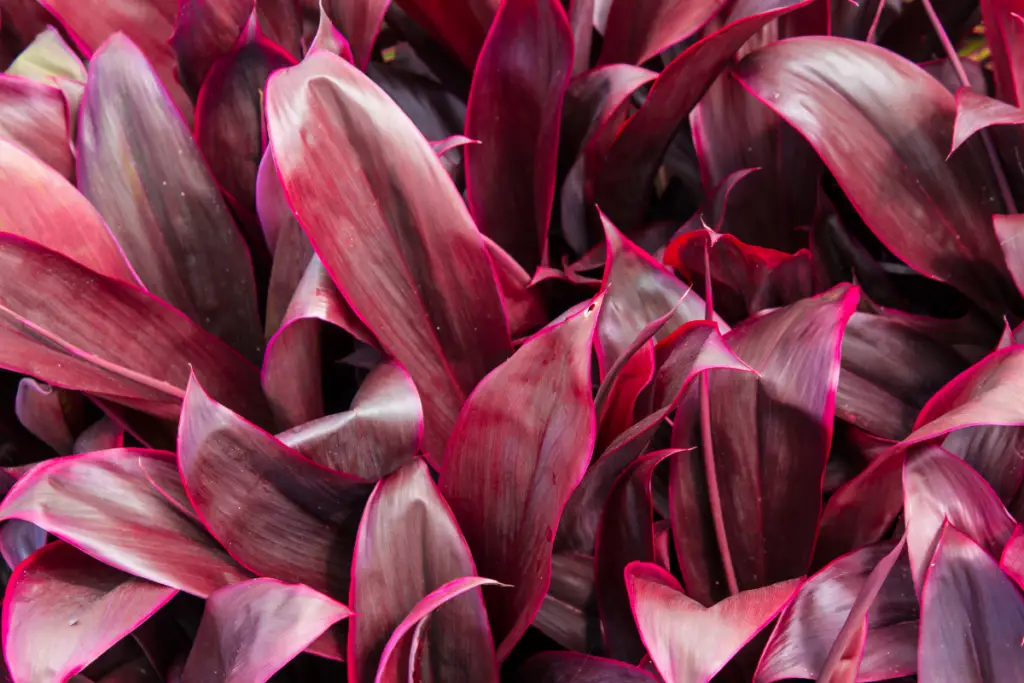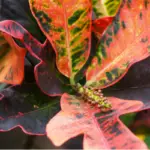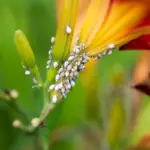Cordyline Red Sister is a stunning plant that can add a pop of color to any garden or indoor space.
This beautiful plant is known for its vibrant, burgundy leaves that can grow up to three feet long.
It is a relatively low-maintenance plant that can thrive in a variety of conditions, making it a popular choice for both beginner and experienced gardeners.
To care for a Cordyline Red Sister plant, it is important to provide it with the right growing conditions.
This includes finding a sunny spot with well-draining soil and watering it regularly. While this plant is relatively easy to care for, it is important to be mindful of potential pests and diseases that can affect its growth.
By following a few simple tips and tricks, anyone can successfully grow and care for a Cordyline Red Sister plant in their home or garden.

Table of Contents
Understanding Cordyline Red Sister
Cordyline Red Sister is a beautiful tropical plant with striking, colorful foliage that adds a touch of elegance to any garden or indoor space.
This plant is also known as the Ti plant, Good luck plant, or Hawaiian Ti plant, and is native to Southeast Asia and the Pacific Islands.
Cordyline Red Sister is a relatively easy plant to care for and is suitable for both indoor and outdoor environments.
It is a slow-growing plant that can reach up to 6 feet tall and 3 feet wide, with long, narrow leaves that can grow up to 2 feet in length.
The leaves are a vibrant shade of burgundy, with a glossy texture that adds to their visual appeal.
To ensure that Cordyline Red Sister thrives, it is important to provide it with the right growing conditions.
This plant prefers bright, indirect light and can tolerate some shade. It also needs well-draining soil that is kept moist but not waterlogged.
Cordyline Red Sister is a tropical plant that thrives in warm, humid environments. It can be grown outdoors in USDA hardiness zones 10-11, but it is also suitable for indoor cultivation.
When grown indoors, it is important to provide the plant with a humid environment by misting the leaves regularly or placing a humidifier nearby.
Overall, Cordyline Red Sister is a stunning plant that is easy to care for and adds a touch of tropical beauty to any space.
With the right growing conditions and proper care, this plant can thrive and provide years of enjoyment.
Ideal Growing Conditions for Red Sister Plant
Growing a healthy and vibrant Red Sister plant requires providing it with the ideal growing conditions.
Here are the key factors to consider when caring for a Red Sister plant:
Light Requirements
Red Sister plants thrive in bright light conditions, but they do not tolerate direct sunlight. It is best to place the plant in a spot that receives bright, indirect light for most of the day.
If the plant is exposed to direct sunlight, the leaves may become scorched and damaged.
Temperature Requirements
Red Sister plants prefer warm temperatures and high humidity. The ideal temperature range for this plant is between 65-95°F (18-35°C).
Temperatures below 60°F (15°C) can damage the plant, so it is essential to keep it away from cold drafts and air-conditioners.
Soil Preferences
Red Sister plants prefer moist and well-draining soil. The soil should be kept consistently moist, but not waterlogged.
The plant can tolerate dry soil, but it prefers to be kept moist. A good potting mix for Red Sister plants is one that is rich in organic matter and has good drainage.
To summarize, providing the Red Sister plant with bright, indirect light, warm temperatures, and moist, well-draining soil is the key to its healthy growth.
By following these ideal growing conditions, you can ensure that your Red Sister plant thrives and adds a tropical touch to your indoor or outdoor space.
Watering Your Red Sister Plant
Cordyline Red Sister plants require regular watering to thrive. However, overwatering can cause root rot, so it’s essential to get the watering schedule right.
The best method is to let the soil dry slightly before watering. When the top inch of soil is dry to the touch, it’s time to water the plant.
It’s important not to let the soil dry out completely, as this can cause the leaves to wilt. On the other hand, overwatering can lead to root rot and other issues.
During the growing season, which is typically spring and summer, the plant will need to be watered more frequently than during the dormant season.
In general, it’s better to underwater than overwater the plant. If in doubt, it’s always best to err on the side of caution and water less rather than more.
One way to ensure that the plant is getting the right amount of water is to use a moisture meter. This handy tool will help you to determine when the soil is dry enough to require watering.
When watering the plant, it’s important to water deeply. This means adding enough water so that it begins to trickle out of the base of the pot. This ensures that the water reaches the roots of the plant.
During the winter months, the plant will require less water than during the growing season. It’s important to reduce watering during this time to avoid overwatering the plant.
In summary, watering your Cordyline Red Sister plant requires a delicate balance. It’s important to water the plant regularly, but not too much. By following the guidelines outlined above, you can ensure that your plant receives the right amount of water to thrive.
Fertilizing Your Red Sister Plant
Cordyline Red Sister plant needs a balanced and slow-release fertilizer to thrive. Fertilizing your plant will help it grow faster, produce more vibrant leaves, and stay healthy.
Here are some tips on how to fertilize your Red Sister plant:
Fertilizer Type
Choose a balanced and slow-release fertilizer that contains equal amounts of nitrogen, phosphorus, and potassium.
The ideal NPK ratio for Cordyline Red Sister is 10-10-10 or 20-20-20. Slow-release fertilizers provide a steady supply of nutrients to the plant over time, reducing the risk of over-fertilization and nutrient burn.
Fertilizer Frequency
Fertilize your Red Sister plant three to four times a year, preferably in spring, summer, and fall. Avoid fertilizing your plant during winter when its growth slows down.
Over-fertilization can cause root damage, leaf burn, and other problems. Always follow the instructions on the fertilizer package to avoid over-fertilizing your plant.
Fertilizer Application
Apply the fertilizer evenly around the base of the plant, avoiding the stem and leaves. Water the plant thoroughly after fertilizing to help the nutrients reach the roots.
Do not fertilize your Red Sister plant when the soil is dry, as this can cause root damage. Wait until the soil is moist before applying fertilizer.
Organic Fertilizer
Organic fertilizers are a great alternative to synthetic fertilizers. They are made from natural ingredients such as compost, manure, and bone meal.
Organic fertilizers provide a slow and steady release of nutrients to the plant, promoting healthy growth and reducing the risk of over-fertilization.
However, organic fertilizers may not provide enough nutrients to meet the needs of your Red Sister plant, so you may need to supplement with synthetic fertilizers.
Signs of Over-Fertilization
Over-fertilization can cause yellowing leaves, leaf burn, root damage, and other problems.
If you notice any of these signs, stop fertilizing your plant and flush the soil with water to remove excess nutrients. Wait until the soil dries out before fertilizing again.
In summary, fertilizing your Cordyline Red Sister plant is essential for its growth and health.
Use a balanced and slow-release fertilizer, fertilize three to four times a year, apply the fertilizer evenly around the base of the plant, and avoid over-fertilization.
Consider using organic fertilizers as an alternative to synthetic fertilizers.
Pruning Your Red Sister Plant
Cordyline Red Sister is a relatively low maintenance plant that requires minimal pruning. However, pruning can be necessary to maintain the plant’s shape and size, remove dead or damaged leaves, and promote new growth.
When to Prune
Pruning can be done at any time of the year, but it is best to do it in spring or summer when the plant is actively growing.
Avoid pruning during the fall and winter months when the plant is dormant.
How to Prune
To prune Cordyline Red Sister, use a sharp, clean pair of pruning shears or scissors. Cut off any dead or damaged leaves at the base of the plant, making sure to cut as close to the stem as possible.
If the plant has grown too tall, cut the stem back to the desired height, making the cut just above a leaf node. This will encourage new growth and help maintain the plant’s shape.
Maintenance Pruning
Regular maintenance pruning can help keep Cordyline Red Sister looking its best. Remove any yellow or discolored leaves as soon as they appear, as these can be a sign of disease or pest problems.
Trim back any leaves that are touching the ground to prevent them from becoming damaged or diseased.
Propagation
Pruning can also be used as a method of propagation for Cordyline Red Sister. Stem cuttings can be taken from the plant and rooted in soil or water to create new plants.
Make sure to use a clean, sharp pair of scissors or pruning shears to take the cutting, and remove any leaves from the bottom of the stem before planting.
Overall, pruning Cordyline Red Sister is a simple and straightforward process that can help keep the plant healthy and looking its best.
With regular maintenance pruning, the plant can thrive and provide a beautiful addition to any indoor or outdoor space.
Dealing with Pests and Diseases
Cordyline Red Sister is generally a hardy and low-maintenance plant. However, like all plants, it is susceptible to pests and diseases.
Here are some common pests and diseases that can affect Cordyline Red Sister and how to deal with them.
Common Pests
- Spider Mites: These tiny pests are common in dry environments. They suck the sap out of the leaves, causing them to turn yellow and eventually die. To get rid of spider mites, spray the plant with a mixture of water and dish soap or neem oil. Repeat the process every few days until the pests are gone.
- Mealybugs: These small, white insects feed on the sap of the plant and leave behind a sticky residue. To get rid of mealybugs, remove them with a cotton swab dipped in rubbing alcohol. You can also use insecticidal soap or neem oil to kill mealybugs.
- Scale Insects: These pests are small, oval-shaped insects that attach themselves to the leaves and stems of the plant. They feed on the sap of the plant and can cause the leaves to turn yellow and eventually fall off. To get rid of scale insects, use an insecticidal soap or neem oil.
Common Diseases
- Leaf Spot: This fungal disease causes brown spots on the leaves of the plant. It can be caused by overwatering or poor air circulation. To prevent leaf spot, make sure the plant is not overwatered and has good air circulation. If the plant does get leaf spot, remove the affected leaves and treat the plant with a fungicide.
- Root Rot: This disease is caused by overwatering and poor drainage. It can cause the roots to rot and eventually kill the plant. To prevent root rot, make sure the plant is not overwatered and has good drainage. If the plant does get root rot, remove the affected roots and repot the plant in fresh soil.
- Bacterial Soft Rot: This disease is caused by a bacterium that infects the plant through wounds or cuts. It can cause the leaves to wilt and the stem to become soft. To prevent bacterial soft rot, make sure the plant is not damaged and has good air circulation. If the plant does get bacterial soft rot, remove the affected parts and treat the plant with a bactericide.
Propagating Your Red Sister Plant
Cordyline Red Sister can be propagated by stem cuttings, division, and air layering.
Here are some tips on how to propagate your Red Sister plant:
Stem Cuttings
Stem cuttings are the most common way to propagate Cordyline Red Sister. To do this, follow these steps:
- Cut a stem of the plant that is approximately 6 inches long.
- Remove the bottom leaves from the stem, leaving only a few leaves at the top.
- Dip the cut end of the stem in rooting hormone.
- Plant the stem in a pot filled with a well-draining potting mix.
- Water the cutting thoroughly and keep the soil moist but not waterlogged.
- Place the pot in a bright, warm location but out of direct sunlight.
- Wait for roots to develop, which usually takes 4-6 weeks.
- Once the roots have developed, transplant the new plant into a larger pot or into the ground.
Division
Another way to propagate Cordyline Red Sister is by division. This method is best done when repotting the plant.
Here are the steps:
- Remove the plant from the pot and gently separate the root ball into two or more sections.
- Each section should have several stems and a good root system.
- Plant each new section in a pot filled with fresh potting mix.
- Water the plants thoroughly and keep the soil moist but not waterlogged.
- Place the pots in a bright, warm location but out of direct sunlight.
Air Layering
Air layering is a more advanced method of propagation that involves creating a new plant from a stem while it is still attached to the parent plant.
Here are the steps:
- Choose a stem that is at least 1/2 inch in diameter and has no side branches.
- Remove a section of bark from the stem, about 1 inch long.
- Apply rooting hormone to the exposed area.
- Wrap the exposed area with damp sphagnum moss and cover with plastic wrap.
- Secure the moss and plastic wrap with tape.
- Check the moss periodically and keep it moist.
- After a few weeks, roots should begin to form.
- Once the roots have developed, cut the stem below the moss and plant it in a pot filled with fresh potting mix.
By following these tips, you can propagate your Cordyline Red Sister plant and create new plants to enjoy or share with friends and family.
Conclusion
Cordyline Red Sister is a beautiful plant that can add a touch of tropical flair to any indoor or outdoor space. With the right care, it can thrive and grow into a stunning centerpiece.
To care for your Cordyline Red Sister, make sure to provide it with bright, indirect sunlight, well-draining soil, and regular watering. It prefers moist but not waterlogged soil, so be sure to let the soil dry slightly before watering. During winter, reduce watering to avoid over-watering the plant.
Regular grooming and maintenance, such as removing dead leaves and stems, can help keep the plant healthy and vibrant.
It can also be propagated easily through stem cuttings, making it a great option for those looking to expand their collection.
While the Cordyline Red Sister is generally a hardy plant, it can be susceptible to pests such as spider mites and mealybugs.
Keep an eye out for any signs of infestation and take action promptly if necessary.
Overall, the Cordyline Red Sister is a low-maintenance plant that can bring a touch of the tropics to any space.
With proper care and attention, it can thrive and grow into a stunning addition to your collection.
- How to Dry Basil Leaves: A Professional Guide
- Is an Avocado a Fruit or Vegetable? Simple Answer and Explanation
- Does Pineapple Have Seeds? Exploring the Anatomy of Pineapples
- Blooming Through Winter: Can I Grow Vegetables Indoors in the Winter?
- What Can You Grow in a Greenhouse All Year Round: A Guide to Year-Round Greenhouse Gardening
- Are Blueberries Blue? Debunking the Myth of Their Color
















